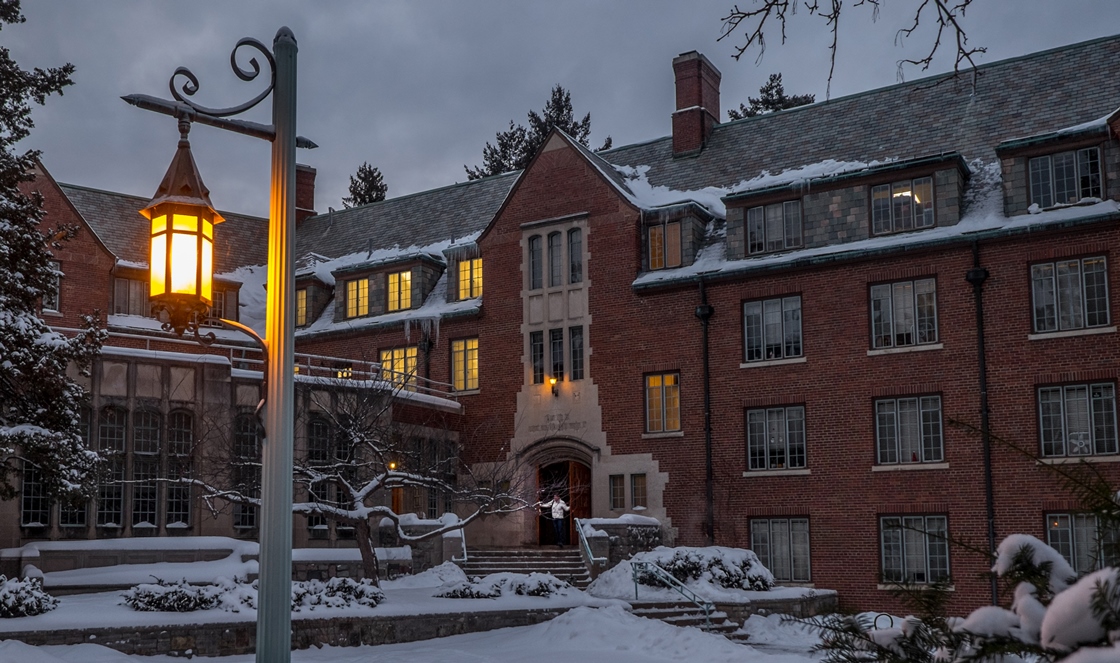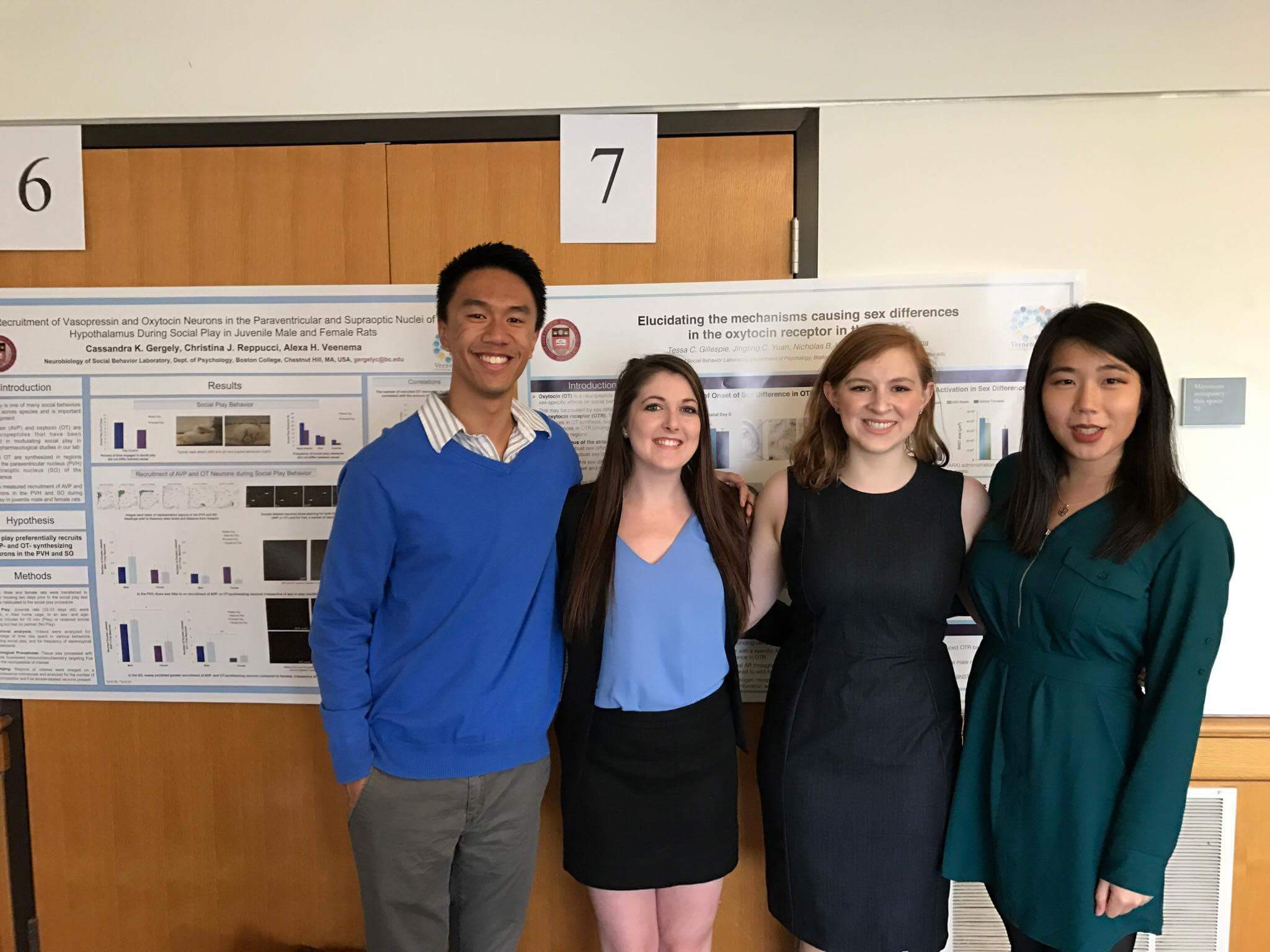December 2017
Caroline Smith published a paper in the journal Psychoneuroendocrinology entitled Nucleus accumbens mu opioid receptors regulate context-specific social preferences in the juvenile rat. Caroline and co-authors Kevin Wilkins, Sara Li, Max Tulimieri, and Alexa Veenema show that mu-opioid receptors modulate the preference of juvenile rats to interact with novel or familiar (cage mate) peers. Specifically, activation of mu-opioid receptors in a brain region called the nucleus accumbens promotes social novelty preference in socially housed juveniles. Interestingly, when juveniles are single housed, they show reduced social novelty preference due to an increase in interaction with their cage mate. This reduced social novelty preference can be restored by activating mu-opioid receptors in the nucleus accumbens. Thus, mu-opioid receptor activation in the nucleus accumbens is necessary for juvenile rats to be interested in exploring novel social stimuli.
December 2017
Alexa is co-author on a paper published in the journal Nature Communications entitled Hippocampal oxytocin receptors are necessary for discrimination of social stimuli with Tara Raam as leading author and Amar Sahay as senior author demonstrating a role for oxytocin receptor-expressing cells in specific subregions of the hippocampus in discrimination of social stimuli and delineating a pathway relaying social memory computations in the anterior hippocampus to the posterior hippocampus to guide social recognition.
November 2017
Remco, Alexa, Caroline, and Christina presented their work at the 8th Annual Meeting of the Society for Social Neuroscience and at the 47th Annual Meeting of the Society for Neuroscience in Washington DC.

October 2017
Congrats to Ashley Chambers for being awarded the Provost Undergraduate Research Initiative Award!
September 2017
Congrats to Christina Reppucci for winning first place in the talk competition at the 2017 Michigan Regional Postdoctoral Symposium!! She talked about the neuroscience of social play and presented her latest findings on the role of the neuropeptide orexin in regulating social play in juvenile male and female rats.
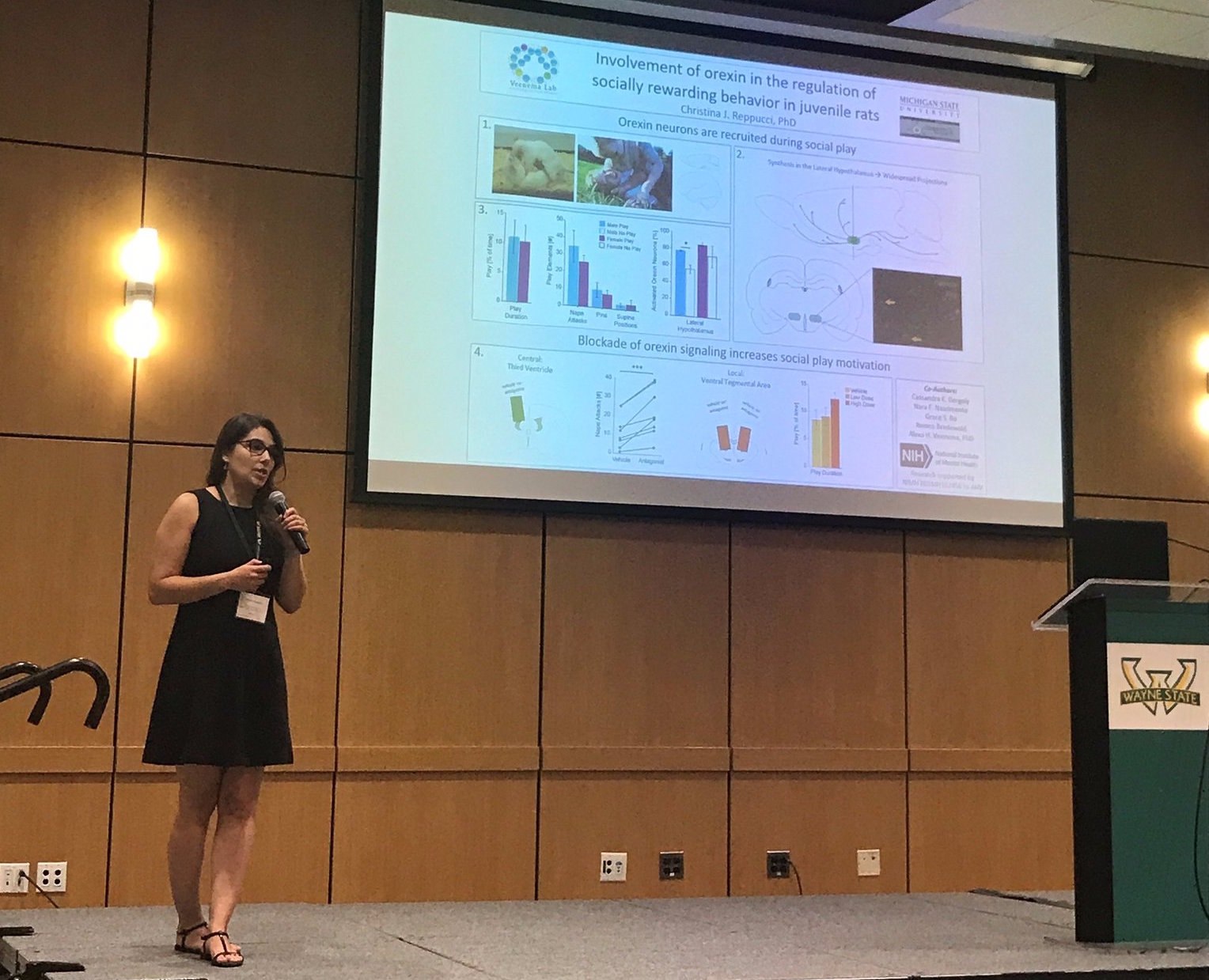
September 2017
Caroline Smith published a paper in the journal Brain Structure and Function: Robust age, but limited sex, differences in mu-opioid receptors in the rat brain: relevance for reward and drug-seeking behaviors in juveniles. Caroline and co-authors Aarane Ratnaseelan and Alexa Veenema demonstrated that compared to adult rats, juvenile male and female rats showed higher mu-opioid receptor (MOR) binding density in 11 out of 33 brain regions analyzed. These include the lateral septum, bed nucleus of the stria terminalis, hippocampus, and thalamus. Sex differences in MOR binding density were observed in only two brain regions. These findings provide an important foundation for the generation of hypotheses regarding differential functional roles of MOR activation in juveniles versus adults. Specifically, we propose the possibility that higher MOR binding densities in juveniles may allow for higher MOR activation, which could facilitate behaviors that are heightened during the juvenile period, such as reward and drug-seeking behaviors.
July 2017
Remco and Justin presented posters (photos) and Christina and Alexa gave talks at the 12th World Congress on Neurohypophysial Hormones in Rio de Janeiro, Brazil. Christina received the Glenn I. Hatton Memorial Award (photo), we were honored to meet Maurice Manning (photo), whose vasopressin and oxytocin receptor antagonists are vital to our research, and Remco and Alexa were reunited with their scientific parents, Dr. Inga Neumann (University of Regensburg, Germany) and Dr. Geert de Vries (Georgia State University, USA), and their scientific grantparent Dr. Quentin Pittman (University of Calgary, Canada; photo).
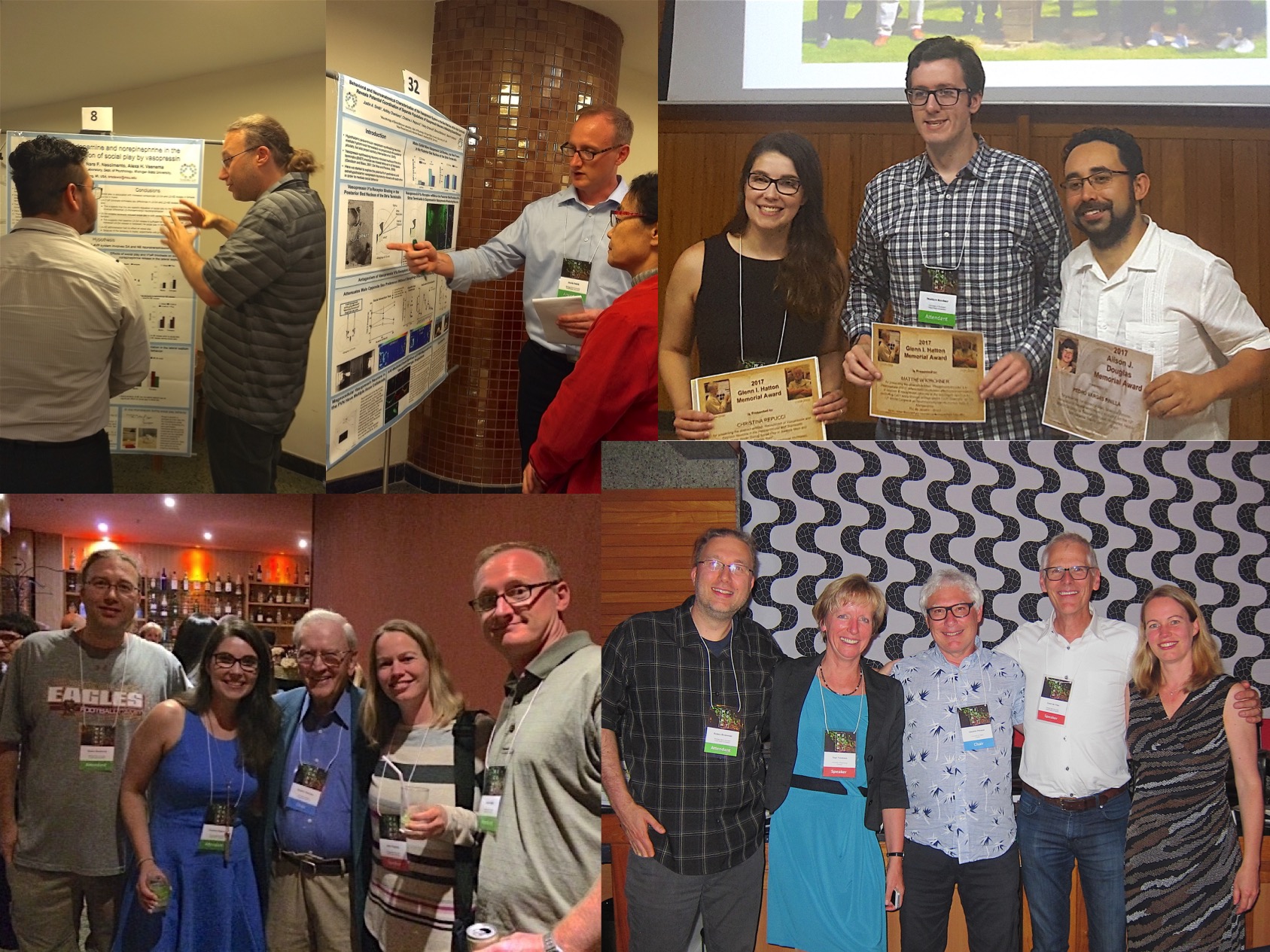
June 2017
Congrats to Christina Reppucci for receiving the Glenn I. Hatton Memorial Fellowship to participate at the WCNH meeting in Brazil!
June 2017
Congrats to Justin Smith for receiving the American Physiology Society Travel Award to participate at the WCNH meeting in Brazil!
June 2017
Alexa and Edward Nieh chaired the symposium:”Neurobiological mechanisms of social and non-social reward” at the 26th Annual Meeting of the International Behavioral Neuroscience Society in Hiroshima, Japan. Speakers were Edward Nieh (Princeton University, USA), Tom MacPherson (Kyoto University Graduate school of Medicine, Japan), Bernadette O’Donovan (University of South Carolina, USA), and Alexa.
May 2017
Remco Bredewold, Christina Reppucci (on photo), Justin Smith and Alexa Veenema participated in the Michigan Chapter of the Society for Neuroscience meeting that was hosted by the University of Michigan.
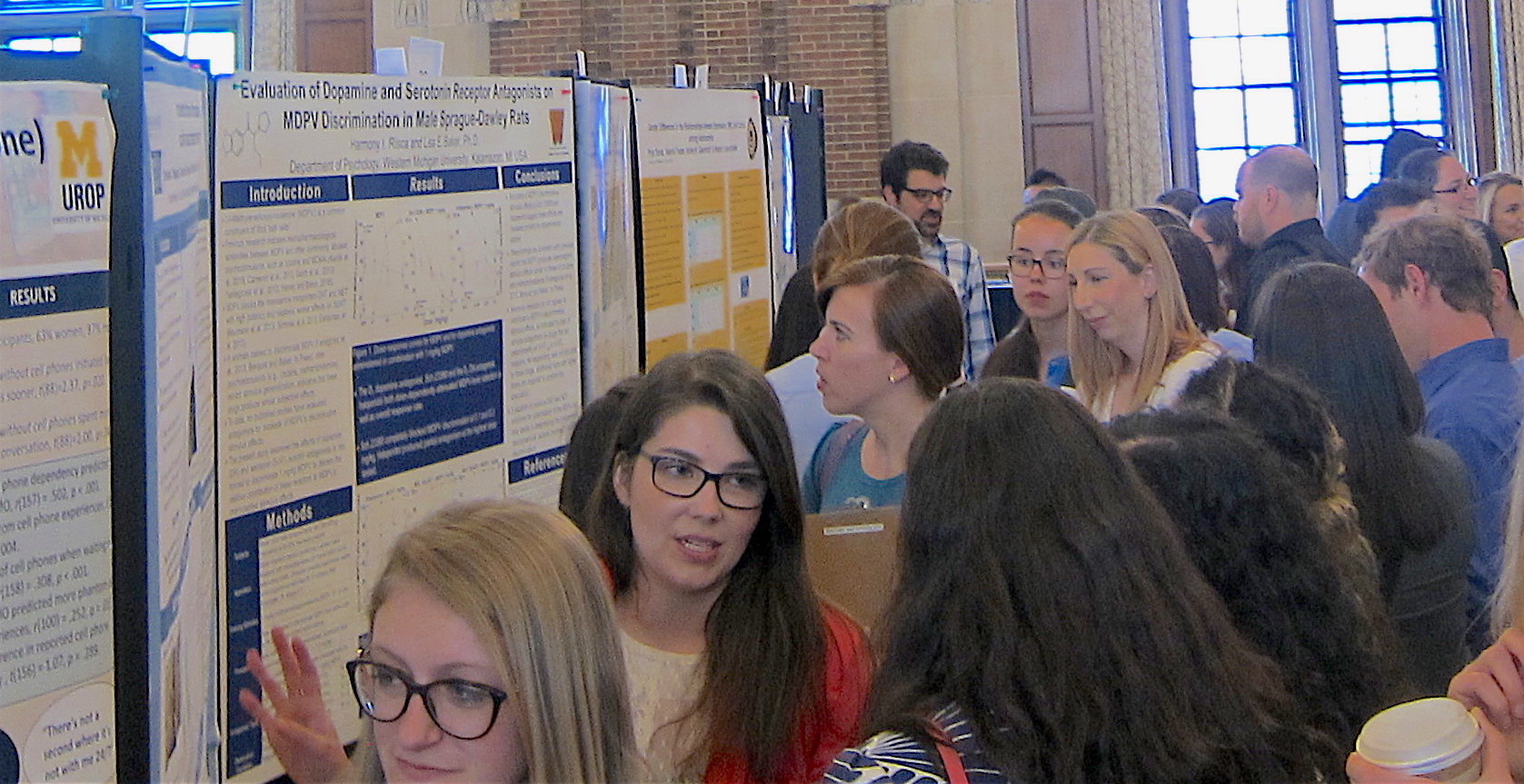
May 2017
Caroline Smith published a paper in the journal Hormones and Behavior: Involvement of the oxytocin system in the nucleus accumbens in the regulation of juvenile social novelty-seeking behavior. Caroline and co-authors Jazmin Mogavero, Max Tulimieri, and Alexa demonstrated that blocking oxytocin receptors in the nucleus accumbens, but not in the lateral septum or basolateral amygdala, reduces social novelty-seeking in juvenile male rats. Social novelty-seeking (i.e., having an interest in and seeking out novel social contacts) is thought to be highly adaptive during the juvenile period when individuals transition from immaturity to adulthood. Social novelty seeking is impaired in autistic children and may contribute to low social reciprocity and social interest. Our findings are the first to suggest the involvement of the oxytocin system in facilitating social novelty-seeking behavior. This may be of relevance to our understanding of altered social novelty-seeking behavior.
May 2017
Harry Cheung was awarded Boston College’s Balkema Prize for Best Biology Senior Thesis in 2017!! He was presented with a large plaque for his diploma. Congrats to Harry!!
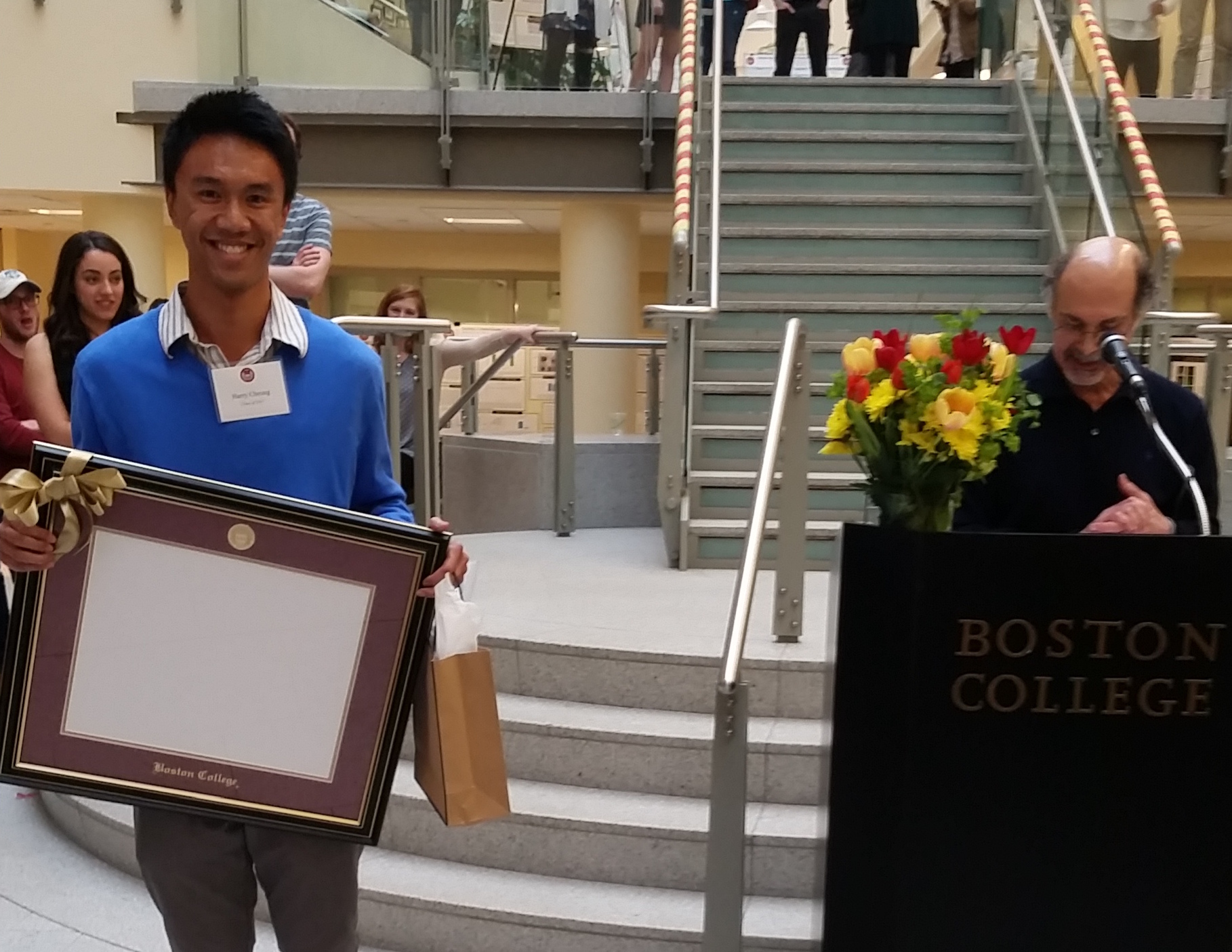
May 2017
Harry Cheung, Cassie Gergely, Tessa Gillespie, and Christine Yuan presented data of their senior theses at Boston College’s Psychology Undergraduate Research Conference. Harry and Christine also presented their data at Boston College’s Biology Undergraduate Research Day.
April 2017
Kelly Dumais published a paper in the journal Psychoneuroendocrinology entitled Sex differences in neural activation following different routes of oxytocin administration in awake adult rats. Kelly and co-authors Praveen Kulkarni, Craig Ferris (both from Northeastern University), and Alexa Veenema demonstrate that adult male rats showed activation in more brain regions than adult female rats in response to oxytocin. This sex difference is independent of route of administration of oxytocin (that is centrally or peripherally). However, central oxytocin administration induced sex differences in activation in more brain regions than peripheral oxytocin. Interestingly, males showed more activation in the nucleus accumbens,while females showed more activation in the amygdala following central oxytocin, findings that are in line with fMRI studies in humans administered intranasal oxytocin. Given the potential of oxytocin to alleviate social dysfunction in a range of sex-biased neuropsychiatric disorders, these findings indicate the need for better understanding of the sex-specific modulation of oxytocin on brain function, in order to determine whether oxytocin can be used to treat social dysfunction in men and women alike.
March 2017
Caroline successfully defended her dissertation!! Her committee members were Drs. Alexa Veenema, Gorica Petrovich, John Christianson, Sara Cordes and Heather Brenhouse. Caroline received an NSF predoctoral fellowship, is author on four peer-reviewed articles, and will be the author on 4 more articles in preparation. Caroline accepted a postdoctoral position in the lab of Dr. Staci Bilbo at Harvard Medical School. Congrats to Dr. Caroline Smith!
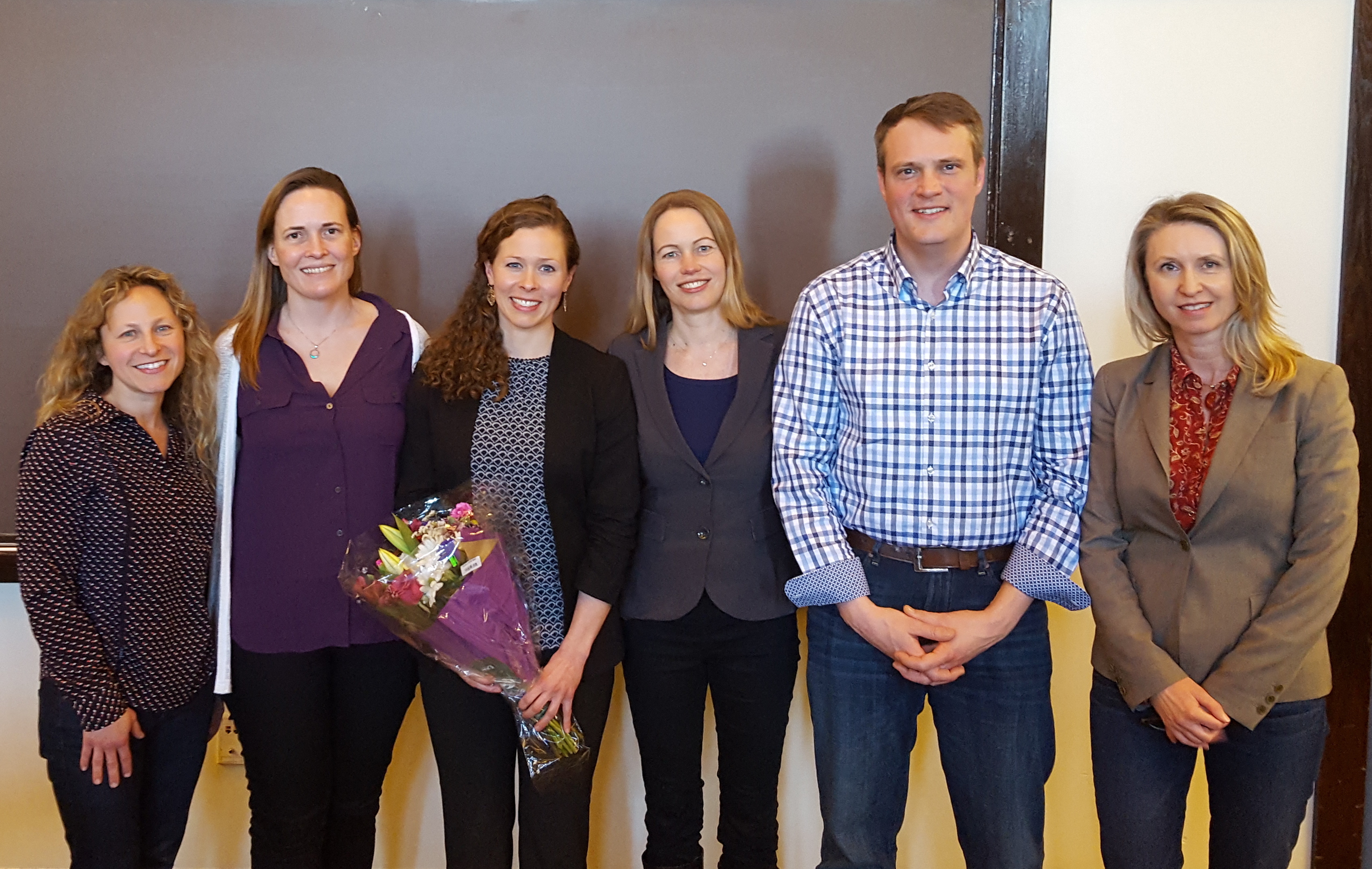
March 2017
Brett DiBenedictis published a paper in the Journal of Comparative Neurology entitled Quantitative Mapping reveals age and sex differences in vasopressin, but not oxytocin, immunoreactivity in the rat social behavior neural network. Brett and co-authors Elizabeth Nussbaum, Harry Cheung, and Alexa Veenema found numerous age (16 subregions) and sex (10 subregions) differences in density of vasopressin axonal projections and in the number of vasopressin cells, which were mainly observed in the medial amygdala/bed nucleus of the stria terminalis to lateral septum circuit. In contrast to vasopressin, no age or sex differences in oxytocin axonal projections or oxytocin cell bodies in any of the 22 subregions of the forebrain social behavior neural network were observed. Thus, unlike the static pattern observed for oxytocin, vasopressin innervation of the forebrain social behavior neural network appears to undergo developmental changes, and is highly sexually dimorphic. This provides an important framework to test hypotheses with regards to the functional consequences of these age and sex differences in AVP for the regulation of social behavior.
January 2017
Kelly and Alexa’s review paper in the Journal of Neuroendocrinology entitled Vasopressin and oxytocin receptor systems in the brain: Sex differences and sex-specific regulation of social behavior has been cited 31 times by Google Scholar within 1 year after online publication!

